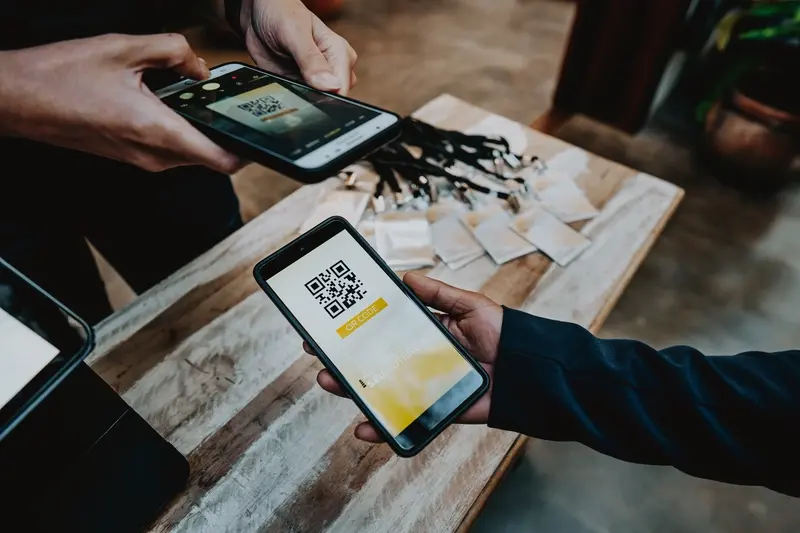What's The Best Way To Handle Event Registration And Check-Ins?
Picture arriving at a conference venue thirty minutes before your big presentation, only to find yourself stuck in a queue that snakes around the building. People are shuffling papers, checking phones, and getting increasingly frustrated as volunteers frantically search through boxes of badges. Sound familiar? We've all been there—either as the poor soul waiting in line or the stressed organiser watching their event start on the wrong foot.
Event registration and check-ins might seem like simple tasks, but get them wrong and you'll watch your carefully planned event turn into chaos before it even begins. The reality is that most event organisers underestimate just how much these processes can make or break the attendee experience. When people arrive excited and ready to engage, the last thing you want is to dampen their enthusiasm with a clunky registration system.
The first impression your attendees get isn't your opening speaker or your venue—it's your check-in process
Over the years, I've watched countless events struggle with outdated systems, lost data, and manual processes that simply don't scale. The good news? Modern attendee management doesn't have to be complicated or expensive. Throughout this guide, we'll explore practical solutions that work for events of all sizes, from intimate workshops to large conferences, helping you create smooth experiences that set the right tone from the moment people walk through your doors.
Understanding Event Registration Basics
Event registration is the process where people sign up to attend your event—whether that's a small workshop, a conference, or a massive festival. Think of it as your guest list, but with a lot more information attached. When someone registers, you're collecting their details, managing their ticket type, and setting up their entire event experience before they even walk through the door.
What Information Do You Actually Need?
This is where many event organisers go wrong—they ask for everything! Name, address, phone number, dietary requirements, favourite colour, mother's maiden name. Well, maybe not the last two, but you get the idea. The truth is, you only need what you'll actually use. For most events, that's name, email, and ticket type. Anything beyond that should serve a specific purpose; dietary requirements if you're serving food, company name if it's a business networking event.
Free vs Paid Registration Systems
You've got two main paths here. Free systems like Eventbrite or Facebook Events work brilliantly for smaller events but often come with limitations—restricted customisation, basic reporting, and sometimes fees per ticket. Paid systems give you more control but require upfront investment. The choice really depends on your event size and how much data control you need.
Planning Your Check-In Strategy
Getting your check-in strategy right from the start can make or break your event experience. I've worked with countless event organisers over the years, and the ones who nail their check-in process are always the ones who planned it properly beforehand—not those who wing it on the day.
Your strategy needs to cover three main areas: timing, staffing, and technology setup. Start by working out how many people you expect to arrive and when they'll show up. Most events see a rush in the first 30 minutes, so you'll need enough check-in points to handle that surge without creating long queues.
Key Elements of Your Check-In Plan
- Number of check-in stations needed
- Staff training requirements
- Equipment setup and backup plans
- Queue management systems
- Signage and directions
Staff training is something people often overlook. Your team needs to know the system inside out before the event starts. They should be able to handle common problems like missing registrations or name discrepancies without calling for help every five minutes.
Test your entire check-in process with real people before the event day. Run through different scenarios including technical failures and difficult attendee situations.
Don't forget about the physical space either. You need clear signage, proper lighting, and enough room for people to queue without blocking other areas. The last thing you want is confused attendees wandering around looking for where to check in.
Choosing the Right Registration Technology
After years of working with event organisers, I've noticed one pattern that keeps repeating—people get overwhelmed by all the tech options available for registration. There are web-based platforms, mobile apps, desktop software, and hybrid solutions. Each promises to be the best, but the truth is there's no one-size-fits-all answer.
The size of your event matters more than you might think. Small gatherings of under 100 people can often get by with simple online forms or basic ticketing platforms; large conferences with thousands of attendees need robust systems that can handle heavy traffic without crashing. I've seen too many events fail because someone chose beautiful software that couldn't cope with the actual load.
Key Features That Actually Matter
Real-time data syncing between devices is non-negotiable—your check-in staff need to see updates instantly to avoid double entries. Offline capability saves you when Wi-Fi fails (and it will fail at some point). Integration with your existing tools like CRM systems or email platforms prevents hours of manual data entry later.
Budget vs Reality
Free solutions work fine for simple events but often lack support when things go wrong. Paid platforms typically offer better reliability and customer service—which becomes priceless when you're dealing with stressed attendees at 8am on event day. Consider your risk tolerance carefully.
Managing Attendee Information Securely
I've worked on event registration systems for everything from small corporate workshops to massive music festivals, and let me tell you—data security isn't just a nice-to-have anymore. When people hand over their personal details during event registration, they're trusting you with information that could seriously impact their lives if it falls into the wrong hands. Credit card numbers, addresses, phone numbers—it's all there in your attendee management system.
Protecting Personal Data
Your registration platform needs to encrypt data both when it's being sent and when it's stored on servers. Think of encryption like a secret code that scrambles the information so badly that even if someone steals it, they can't read it without the key. Most reputable check-in systems do this automatically, but it's worth checking before you commit to any platform.
The biggest mistake I see event organisers make is assuming their registration provider handles all the security automatically—you need to ask the right questions upfront
Setting Access Controls
Not everyone on your team needs access to every piece of attendee information. Your volunteer helping with check-ins doesn't need to see credit card details or personal addresses. Set up different permission levels so people can only access what they need for their specific role. This reduces the risk of accidental data breaches and keeps sensitive information on a need-to-know basis.
Streamlining the Check-In Process
The moment your attendees arrive at your event is when all that planning either pays off or falls apart—and I've seen both outcomes more times than I care to remember! A smooth check-in process sets the tone for the entire event, whilst a chaotic one can leave people frustrated before they've even walked through the door.
Speed Is Everything
Your check-in system needs to be fast. Really fast. People don't want to queue for ages, especially when they're excited to get inside. QR codes are brilliant for this—attendees can simply show their phone screen and get scanned in within seconds. No fumbling around for paper tickets or spelling out email addresses.
Have a Backup Plan Ready
Technology fails sometimes; that's just life. Your registration app might crash, the internet might go down, or someone's phone battery might die. Always have a backup system ready—whether that's a printed attendee list or offline mode on your app.
Train your check-in staff properly too. They need to know how the system works and what to do when things go wrong. A friendly, knowledgeable person at the door can turn a potential disaster into just a minor hiccup that people quickly forget about.
Handling Last-Minute Changes and Walk-Ins
Event registration never goes exactly to plan—trust me on this one. You'll have people changing their minds about attending, dietary requirements that pop up the day before, and walk-ins who somehow missed every single piece of marketing you put out there. The key is building flexibility into your system from the start rather than scrambling to fix things when chaos strikes.
Your registration platform needs to handle real-time updates without breaking a sweat. When someone calls to say they're bringing their partner who wasn't originally registered, you should be able to add them to your attendee management system in seconds, not minutes. The same goes for cancellations—remove them from the list and update your numbers instantly.
Managing Walk-In Registrations
Walk-ins are the wild cards of event management, but they don't have to derail your check-ins process. Set up a dedicated tablet or device specifically for on-the-spot registrations. This keeps your main check-in queue moving whilst still capturing all the details you need from unexpected guests.
Keep a buffer of 10-15% extra capacity for walk-ins and last-minute additions. Your future self will thank you when the venue doesn't turn into a fire hazard.
Essential Information to Capture
- Full name and contact details
- Any dietary requirements or accessibility needs
- Emergency contact information
- Payment details if there's a registration fee
- Marketing consent preferences
The trick is training your team to stay calm when things get hectic. Brief them on the walk-in process beforehand and make sure someone senior is always available to make quick decisions about capacity and special requests.
Tracking and Reporting Event Data
Once your event wraps up, the real goldmine of information starts to reveal itself. I've worked on countless event apps over the years, and I can tell you that the data you collect during registration and check-in is absolutely priceless for future planning. Most event organisers focus so much on getting people through the door that they forget about what comes next—analysing what actually happened.
Your registration system should automatically capture key metrics without you having to lift a finger. We're talking about attendance rates, check-in times, no-show percentages, and demographic breakdowns. The beauty of digital systems is that they do all this heavy lifting for you, creating reports that would have taken days to compile manually just a few years ago.
What Data Should You Track?
Not all data is created equal, and you don't want to get lost in numbers that don't actually help you. Focus on metrics that will genuinely improve your next event:
- Registration completion rates and drop-off points
- Peak check-in times and queue lengths
- Attendance patterns by ticket type or demographic
- No-show rates and last-minute cancellations
- Popular session choices and capacity issues
Turning Numbers Into Action
Raw data means nothing if you can't act on it. Look for patterns that tell a story—maybe your VIP guests consistently arrive later than expected, or perhaps your online registration process has a high abandonment rate at the payment stage. These insights become the foundation for making your next event even better.
However, be wary of making decisions based on inaccurate or incomplete data. Clean, reliable information is essential for meaningful analysis that will actually improve your future events.
Conclusion
After working with countless event organisers over the years, I can tell you that getting event registration and check-ins right makes or breaks the attendee experience. You've now got all the pieces of the puzzle—from understanding the basics to handling those inevitable last-minute surprises that pop up on event day.
The biggest mistake I see people make? Overthinking the technology and underthinking the process. Your registration system doesn't need every bell and whistle; it needs to work reliably and make life easier for both you and your attendees. Whether you're running a small workshop or a massive conference, the principles remain the same—plan ahead, test everything twice, and always have a backup plan.
Remember that attendee management isn't just about getting people through the door quickly (though that's part of it). It's about creating that smooth first impression that sets the tone for your entire event. When someone can register easily and check in without queuing for ages, you've already won half the battle.
The data you collect along the way becomes gold dust for future events—use it wisely and watch your registration processes get better with each event you run.
Share this
Subscribe To Our Learning Centre
You May Also Like
These Related Guides

What Features Should My Event Planning App Have For Organisers?

Should My Event App Work for Both Virtual and in-Person Events?



